This was published 1 year ago
Southern Italy, travel guide and things to do: The four hidden gems within Italy's famous boot
By Tim Jepson
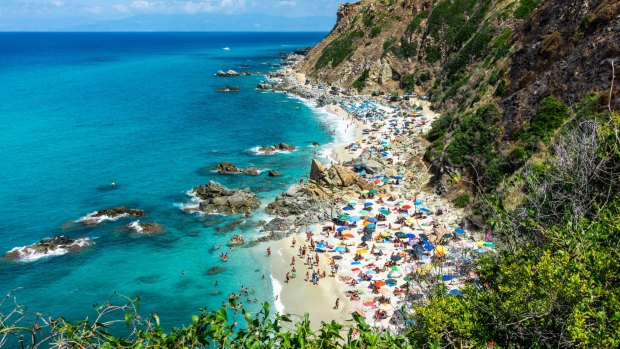
Calibria's turquoise-rimmed Zambrone Beach.Credit: iStock
Every country has its forgotten corners, the regions ignored by visitors, the backwaters often blighted by poverty, history and geographical bad luck. Even Italy, among the most blessed of destinations, has such outposts, places that until recently were often seen only by the more well-informed travellers.
Few of these overlooked destinations deserve their obscurity, and certainly not in Italy where some of the least visited regions by foreigners make up the most southerly parts of the famous cartographic boot – Puglia, the heel and spur; Basilicata, the instep; and Calabria, the toe. A fourth, Campania, is barely known beyond Naples, Pompeii and the Amalfi Coast.
Reputational reboots, of course, are slow in coming. In central Italy, for example, Umbria took decades to emerge from Tuscany's shadow. Stars need to align: the word needs to spread, hotels need to improve, low-cost flights need airports.
Puglia has taken the lead in southern Italy. The raw materials were always there – the towns, the food, the landscapes, the coastline, and the ancient masserie, or fortified manor houses, ripe for conversion to luxury hotels.
From Puglia the ripples are spreading to neighbouring Basilicata, where the emergence of Matera, a European Capital of Culture in 2019, has drawn visitors and is encouraging the exploration of the majestic mountains, ancient Greek sites and coastal enclaves elsewhere in the region.
Calabria, too, is on the up, spurred on by low-fare flights from elsewhere in Europe to the airport at Lamezia. Tailor-made specialists now have a handful of fine hotels on their books in the region, and big tour operators are dipping a tentative toe in the waters of several coastal resorts.
In time, these coastal footholds should provide a springboard for exploration deeper into the interior, where the landscapes of the Sila and Aspromonte mountains are the equal of any in Italy.
This said, while none of these regions will ever eclipse regions like Tuscany, for the traveller wishing to broaden their horizons, you could do worse than take a tentative step into the Italian boot. So, read on for a summary of the regions' highlights, along with ideas on how to see and enjoy them.
BASILICATA
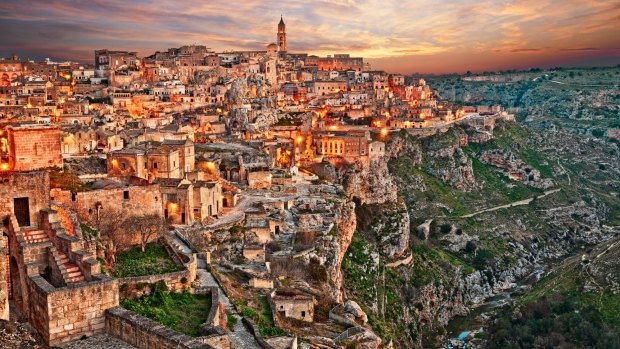
Basilicata is the least-known of southern Italy's regions, hemmed in to the east and west by Puglia and Campania, and by Calabria to the south.
One of Italy's poorest areas, it has recently become better known, thanks to the emergence of Matera, one of Italy's most alluring towns; a honeycomb of rock-cut churches and ancient cave dwellings – the sassi – that after decades of restoration are now a World Heritage Site.
One of the first of several hotels to be built into the old caves is the Sextantio (sextantio.it) and it remains a standout. There are plenty of alternatives but be sure to stay in the old town itself, easily explored and with Bari airport close.
To be sure, Matera is often paired with sights in nearby Puglia but its rewards – art, culture, food and unique townscapes – are undoubted.
Beyond Matera, Basilicata's most easily accessed reward is Maratea, the focus of several chic, mountain-framed beach resorts on the region's Tyrrhenian coast. Fine little centres in its orbit include Acquafredda, D'Illicini, Macarro and Anginarra, all perfect for couples and families in search of small resorts outside the mainstream.
Across the region, the Ionian coast is low-key by comparison, but of appeal to archaeology buffs for the partially excavated ruins of the Greek colonies of Metapontum – close to lovely beaches at Terzo Cavone – and Heraclea, once two of the most powerful cities in the ancient world.
You'll find more historic sites in the towns of Melfi and Venosa – the 11th-century Trinità abbey close to the latter is a must-see – but Basilicata's real glories after Matera are its landscapes, notably the verdant, volcanic slopes of Monte Vulture, renowned for its wines and the majestic Monte Pollino National Park, one of Europe's last great wilderness areas.
You can explore the park by car – though roads are few – and better still on foot or by bike, from bases such as Rotonda or Terranova di Pollino, but this is country for serious outdoor enthusiasts, with few marked trails, so it pays to book a local guide or join a guided walking holiday (see below).
PUGLIA
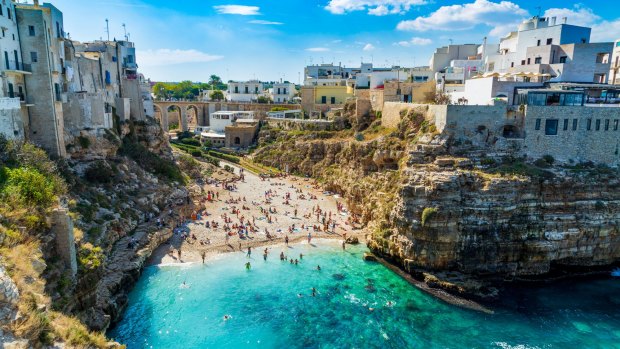
Puglia is the best known and most broadly appealing of Italy's southern quartet, a pastoral picture of low, dry hills, ancient olive groves, white-washed houses stark against turquoise seas and a rich medley of art, architecture, food, historic towns, good hotels and – increasingly – villa rentals.
It's also warm-weathered – too hot in high summer for much more than lounging by the pool – but a place you can happily visit in March and April, when poppies are already blooming, or late into autumn, when the beaches are empty but the air is still balmy.
Avoid the plains of the north unless you're en route to the Gargano peninsula, an anomalous enclave of forest, uplands and cliff-edged coastline noted for the pretty fishing villages of Vieste and Peschici.
South from here explore the medieval fortress at Castel del Monte and the towns of Trani, Barletta, Molfetta, Bisceglie and Ruvo di Puglia, whose Norman heritage has left them with some of Italy's most beautiful Romanesque architecture.
The Romanesque also prevails in Bari, home to Puglia's key airport, but it is the baroque that holds sway in the region's most celebrated town, Lecce, with streets full of honey-stoned facades, intricately carved balconies and richly adorned palaces.
Between Bari and Lecce lies "trulli" country, a swathe of pastoral hills and sometimes rather touristy towns – Alberobello, Martina Franca and Locorotondo – scattered with the strange conical dwellings that are almost unique to this part of Puglia. Here, too, are some of Puglia's loveliest small centres, among which Ostuni is the star turn.
South of Lecce, on the Salento peninsula, towards the tip of the heel, the attractions are fishing villages such as Gallipoli and Otranto, full of charm and appealing waterfronts. Wherever you are in Puglia, make time for at least a day trip to Matera just across the regional border in Basilicata.
The Awaiting Table (awaitingtable.com), an imaginative Lecce-based company, offers the chance to learn more about Puglia's rich rural bounty, with a range of hands-on experiences, one of which is a six-day castle-based course devoted to olives, olive oil and other aspects of Puglian life, including time in the olive groves helping with the harvest and replanting.
CAMPANIA
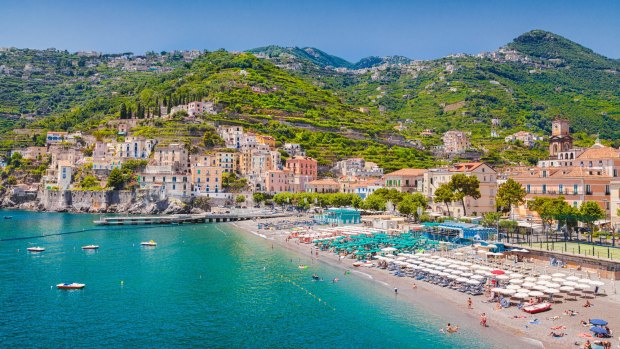
The Romans called it "Campania felix", or the "happy land", inspired by its beauty and fertility, but visitors to Campania today know, and see, virtually nothing of the region beyond the well-worn round of Naples, Pompeii and the Amalfi Coast.
If anything, Amalfi and Pompeii have too many visitors, though Naples is often shunned by those happy to indulge Rome, Florence or Venice, deterred by a reputation – less deserved these days – for being busy and occasionally blighted.
In truth, it's overflowing with character, fine food (it's the birthplace of the pizza, after all), sublime baroque churches, the Palazzo Reale (palazzorealedinapoli.org), with masterpieces by Raphael, Michelangelo, Botticelli and others, and the Museo Archeologico Nazionale (mann-napoli.it), one of Europe's greatest museums.
In short, perfect for a few days or least or as part of a longer trip though if you must visit the Amalfi Coast, around an hour away by road, rail or ferry, stay in quieter villages such as Vettica, Praiano or Maiori, and spend time away from the crowds in the Lattari mountains above the coast. Visit the islands of Ischia and Procida rather than over-indulged Capri.
Better still, branch out into the farther reaches of Campania. Find time, especially, to see the majestic complex of temples at Paestum (museopaestum.beniculturali.it), about 95 kilometres south of Naples, also at the heart of an area known for producing Italy's finest mozzarella.
Visit the local consortium's site (mozzarelladop.com) for details of makers you can visit or contact a producer like Barlotti (barlotti.it), a stone's throw from the temples. And if you're happy to rent a car, then make for the Cilento south of Paestum, which combines fine mountain landscapes, notably the Alburni uplands, with some lovely coastal scenery, small resorts and pretty villages.
CALABRIA
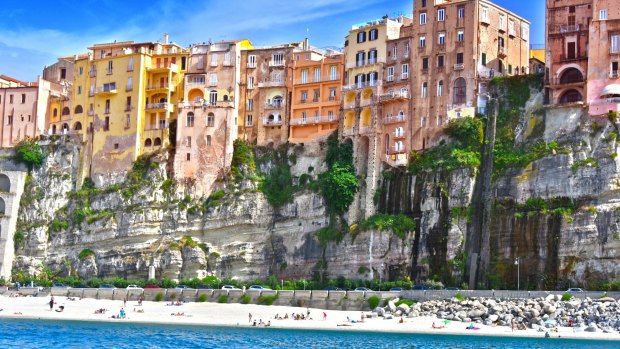
There's no escaping it – Calabria can be a hard sell. The toe of the Italian boot has had a difficult time historically, often conquered, blighted by poverty and emigration, and hidebound by an unforgiving climate and the harshest of landscapes. And unlike Basilicata, it lacks a place like Matera to act as a catalyst for onward exploration.
Yet there are beacons, some on the sea, others in the region's mountainous interior. Calabria's finest stretches of coast begin at Pizzo, close to a bulge of land known as the Promontorio del Poro.
Visit the area's little capital, Vibo Valentina, for its churches and Norman castle, or head straight to Tropea, Calabria's best resort, thanks to its long, sandy beaches and the picturesque cliff-top churches and cathedral of the old town.
From here explore the rest of the promontory, which has more good beaches at Zambrone, Parghelia, Joppolo and Nicotera, as well as some sublime coastal scenery on and around Capo Vaticano.
Inland, Calabria offers a handful of little towns with historical and cultural interest: crag-top Gerace, for example, blessed with an ancient cathedral; Stilo, celebrated for La Cattolica, Italy's best-preserved Byzantine-style church; and Rossano, whose Museo Diocesano houses the 6th-century Codex Purpureus, an illustrated manuscript of the Gospels, one of the earliest and most beautiful in existence.
Like Basilicata, though, Calabria's chief glory is its landscapes, notably the Sila (parcosila.it) and Aspromonte (parks.it) mountains, both protected by national parks and both wildly beautiful and remote.
A car – and a sense of adventure – are essential but the rewards are foothills swathed in jasmine and bergamot, which give way to high pasture, forest and villages, such as Roghudi, Roccaforte del Greco and Gallicianò, where the presence of the Greeks 2500 years ago is still reflected in a dialect said to be closer to the language of Homer and Plato than modern Greek, never mind Italian.
Tim Jepson is the author of The Amalfi Coast, Naples & Southern Italy and a travel writer for The Telegraph, London, where this story first appeared.
FIVE MORE TIPS FOR MAKING THE MOST OF SOUTHERN ITALY
MOUNTAINS TO THE SEA
The beaches near Maratea are among southern Italy's best coastal destinations, frequented by Italian families but still little known to outsiders and, at the other extreme, you can hike to the summit of Monte Pollino (2267 metres) – followed by trails to Maratea. See wewalksouthitaly.it
VILLA THRILLERS
Puglia has all the ingredients for a villa holiday: a range of properties, summer sun and enough diversions for when you want a day away from the pool. The Thinking Traveller has more than 40 properties plus a range of add-on experiences such as boat charters, cheese-making in Alberobello and cooking classes. See thethinking traveller.com
ABBEY ROAD
Head onwards to the superb scenery of the Monti Picentini – the roads around Acerno are spectacular– and nearby Monti della Maddalena, with Montesano as a base, staying at the Palazzo Cestari (palazzocestarihotel.it) for a trip to the Certosa di San Lorenzo, one of Italy's greatest abbeys.
RUIN YOURSELF
One of southern Italy's most popular destinations, Pompeii can be easily experienced independently, though the region has a host of other classical sites rarely seen by casual visitors, many of which can be experienced on private visits or through cultural tour specialists.
WALK THIS WAY
Billed as "a journey across the ancient roots of Europe at the heart of the Mediterranean Sea", Italy's newest long-distance trail is the Cammino Basiliano (caminobasilano.it). At 1390 kilometres it encompasses 73 stages through the great Apennine Ranges, namely the Pollino, Sila and Asrpomonte.
THE DETAILS
FLY
For the first time in almost 20 years, Qantas will begin operating three Boeing 787 Dreamliner flights a week from June 22 to October 6, coinciding with the peak holiday period. The flight time Sydney-Rome, via Perth, will be 22 hours 20 minutes. See qantas.com
VISIT
Provided you've been fully vaccinated, and with vaccines recognised by the European Medicine Agency and administered in Australia, travel to Italy by Australian passport holders, visitors has recently become considerably easier. But do stay across the news and any changes that may affect your travels to and within Italy. Before re-entering Australia, Australians are required to complete the Australian Government's Digital Passenger Declaration. See ema.europa.eu/en; homeaffairs.gov.au
TOUR
If you choose not to travel independently, several escorted journey operators offer fully-guided tours which incorporate southern Italy. Intrepid's 10-day Explore Southern Italy begins in Amalfi and includes visits to Matara, Lecce and Trani. Cost $2382 a person. See intrepidtravel.com
Bunnik Tours' 23-day small group tour which includes southern Italy, and visits Pompei, Matera, and Sicily and Malta costs from $11,495 a person. See bunniktours.com
Collette has an 11-day Southern Italy and Sicily tour, including Matera and the Amalfi, from $4399 a person, twin share. See gocollette.com
MORE
Sign up for the Traveller Deals newsletter
Get exclusive travel deals delivered straight to your inbox. Sign up now.